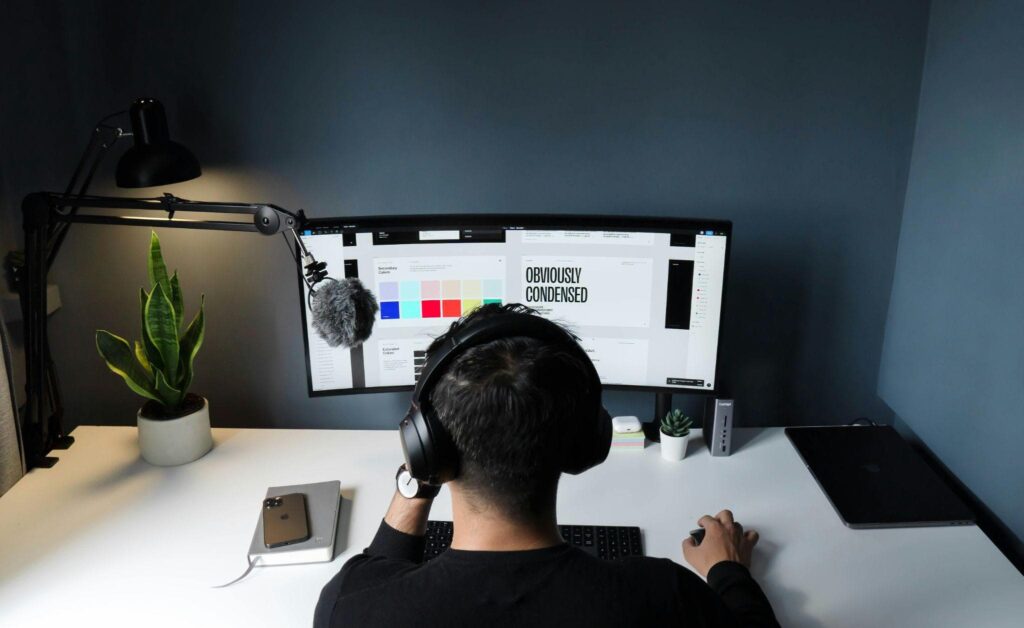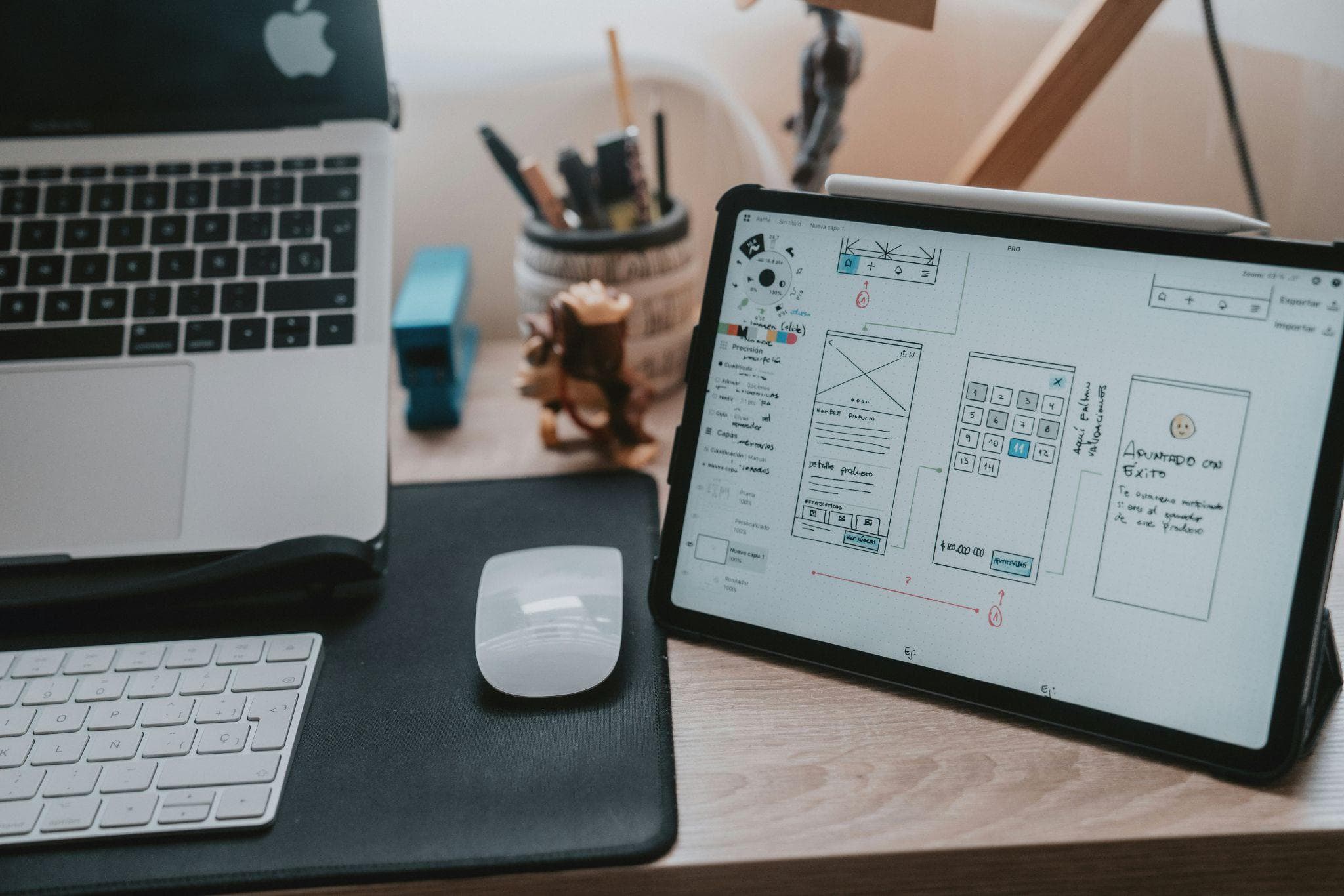As 2025 draws closer, the world of UX/UI design is hurtling toward an exciting future shaped by cutting-edge technologies and changing user expectations. From augmented reality (AR) to artificial intelligence (AI), designers are facing the challenge of creating interfaces that aren’t just visually stunning but also incredibly intuitive. So, what’s on the horizon? Here are five UX/UI trends poised to dominate in 2025—and reshape the way we interact with technology.
Immersive Design with AR and VR
It’s no secret that augmented reality (AR) and virtual reality (VR) have been gradually transforming how we interact with digital spaces. But in 2025, these technologies will shift from being impressive novelties to essential tools in UX/UI design.
AR is already making waves in retail, healthcare, and education by allowing users to interact with products in a “hands-on” digital environment. Picture this: you’re shopping for furniture online and, instead of guessing if a couch fits your living room, you use AR to place a virtual version of it in your space. This type of seamless, interactive experience will soon become the norm.
On the VR side, we’ll see more refined interfaces for virtual meetings, remote collaboration, and even immersive gaming experiences. Think of VR spaces that feel as intuitive to navigate as a well-designed physical room. For designers, this means focusing on spatial awareness, gesture controls, and interfaces that feel almost second nature to users.
In short, AR and VR are moving UX/UI design beyond screens and clicks, and into experiences that feel genuinely immersive and natural.
AI-Driven Personalization
We’ve been hearing about personalization in digital products for years, but AI is about to take it to a whole new level in 2025. Instead of static personalization (like showing you the same tailored homepage every visit), AI will enable real-time, dynamic experiences that adjust on the fly based on your behavior, preferences, and even your mood.
Imagine opening a shopping app that rearranges its layout based on the time of day or your past purchases. Or a streaming platform that knows exactly what you’re in the mood for after a long day at work. That’s the power of AI-driven design.
Voice assistants and chatbots will also evolve. They’ll feel less like scripted robots and more like helpful digital companions, offering context-aware suggestions and understanding casual, conversational language. For designers, the challenge will be integrating these intelligent systems without overwhelming the user experience.
Simply put, AI will make user journeys smarter, smoother, and more tailored than ever before.
Minimalism 2.0: Functional Simplicity

Minimalism in design isn’t new, but in 2025, it’s getting an upgrade. It’s not just about making things “look clean” anymore—it’s about making every design element serve a purpose.
Expect to see interfaces that cut out visual noise, focusing on core functionality without unnecessary bells and whistles. Navigation will be clearer, layouts more intuitive, and every micro-interaction—like swipes, taps, or haptic feedback—will feel deliberate and meaningful.
Mobile-first design will remain a priority, with interfaces optimized for smaller screens and faster load times. Designers will increasingly lean on analytics and data to strip away anything that doesn’t actively improve the user experience.
The result? Interfaces that are not just simple, but smartly simple.
Voice and Gesture-Based Interfaces
Voice interfaces are already everywhere—your phone, your smart home devices, even your car. But by 2025, voice will be more deeply integrated across digital platforms, becoming a core part of UX/UI design rather than an afterthought.
Picture this: You’re cooking dinner, and instead of fumbling with your phone, you ask your voice assistant to set a timer, add something to your shopping list, and read out the next recipe step—all seamlessly. That’s where we’re headed.
At the same time, gesture-based controls will evolve, especially with advances in wearable tech and touchless technology. Instead of clicking buttons or scrolling manually, users might swipe through screens with a wave of their hand or select an option with an eye movement.
For designers, this means a shift in mindset. Interfaces will need to accommodate hands-free interactions while still feeling natural and intuitive. It’s about designing experiences that blend into the user’s environment, rather than pulling them out of it.
Sustainable and Ethical Design
In a world that’s becoming more environmentally conscious, UX/UI design isn’t exempt from the sustainability conversation. In 2025, expect a stronger push toward eco-friendly and ethical design choices.
For starters, “dark mode” will become more than just a stylish choice—it’ll be recognized for its energy-saving benefits, especially on OLED screens. But sustainability in design goes beyond visual elements. Designers will aim to reduce digital waste, like excessive notifications or heavy animations that drain device power.
Ethical design will also take center stage. Transparency around data collection, privacy-first design, and inclusivity for users with disabilities will no longer be optional—they’ll be non-negotiable standards.
Consumers are increasingly favoring brands that align with their values, and ethical, sustainable design will play a big role in earning their loyalty.
Looking Ahead
As we step into 2025, UX/UI design is on the brink of some transformative changes. Whether it’s the seamless integration of AR/VR, the hyper-personalization enabled by AI, or the thoughtful simplicity of minimalist design, one thing is clear: the focus is on creating digital experiences that feel more human, intuitive, and responsible.
For designers, it’s an exciting time. The challenge isn’t just keeping up with these trends—it’s about staying ahead of them, anticipating user needs, and crafting interfaces that don’t just work but delight.


